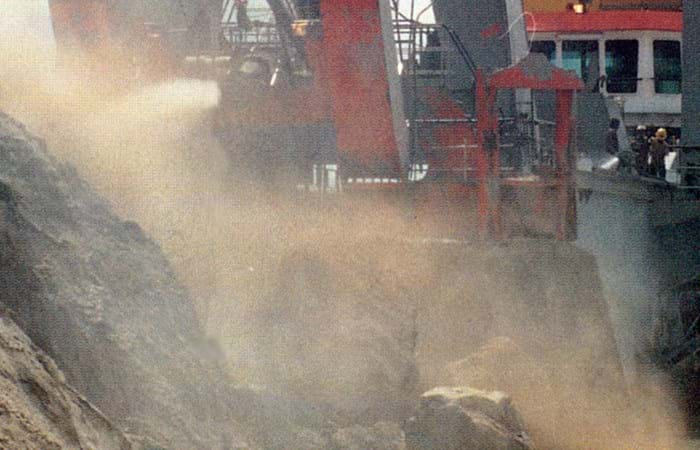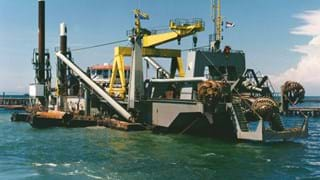One of Guyana’s major export products is bauxite, which originates from the Aroaima, Kwakwani and Ituni regions around the Demerara and Berbice rivers in north-eastern Guyana. Guyana annually exports approximately 2.2 million tons of bauxite from it’s mines along the Berbice River. Boskalis International has long been associated with the mining industry in Guyana. In 1990 a long-term overburden removal project for the Aroaima mine was begun in Guyana involving the dredging and disposal of a sand and clay layer of 30-45 meters thickness.
For this project the cutter suction dredgers Gemini and Edax, were deployed. The bauxite from the Aroaima mine is transported with barges via the Berbice River to New Amsterdam, located at the mouth of the river. In New Amsterdam the bauxite is trans-shipped into Panamax size bulk carriers. To enable this trans-shipment, Boskalis International executed a Design, Finance, Build and Maintain contract in 1995 for a 15-km long access channel and a mooring and turning basin and executes the maintenance dredging works. Potential environmental effects of the capital and maintenance dredging had to be mitigated and were:
- A possible increase of salt intrusion in the Berbice River;
- The risk of additional sedimentation or erosion at the adjacent mangrove flats;
- Possible effects on the coastal system.
Hydronamic, the in-house consultant of Boskalis, was asked to optimize the design, thus mitigating the environmental impact of the maintenance works to the limits set by the client.

